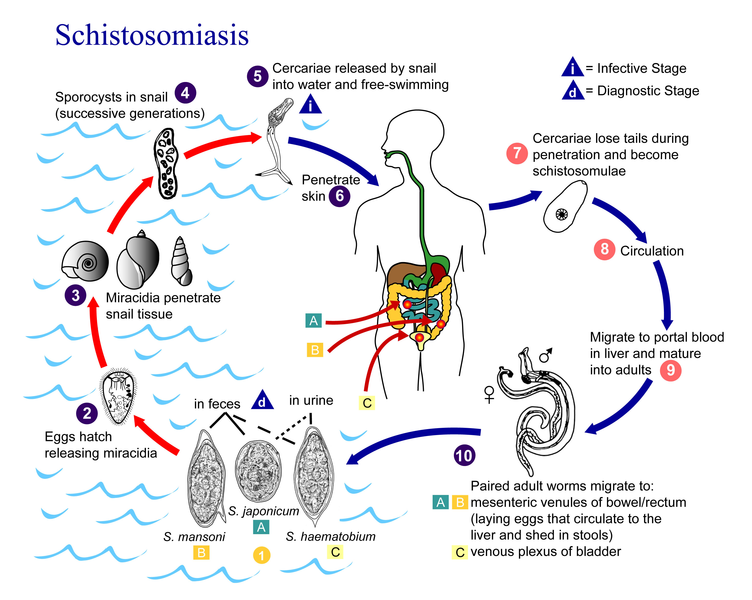Datei:Schistosomiasis Life Cycle.png

Größe dieser Vorschau: 752 × 600 Pixel. Weitere Auflösungen: 301 × 240 Pixel | 602 × 480 Pixel | 963 × 768 Pixel | 1.280 × 1.021 Pixel | 2.560 × 2.042 Pixel | 2.936 × 2.342 Pixel.
Originaldatei zum Herunterladen (2.936 × 2.342 Pixel, Dateigröße: 1,94 MB, MIME-Typ: image/png)
Dateiversionen
Klicke auf einen Zeitpunkt, um diese Version zu laden.
| Version vom | Vorschaubild | Maße | Benutzer | Kommentar | |
|---|---|---|---|---|---|
| aktuell | 23:05, 21. Sep. 2010 |  | 2.936 × 2.342 (1,94 MB) | Leyo | {{Information |Description={{en|Eggs are eliminated with feces or urine (1). Under optimal conditions the eggs hatch and release miracidia (2), which swim and penetrate specific snail intermediate hosts (3). The stages in the snail include 2 generations o |
Dateiverwendung
Die folgenden 3 Seiten verwenden diese Datei:
Globale Dateiverwendung
Die nachfolgenden anderen Wikis verwenden diese Datei:
- Verwendung auf ar.wikipedia.org
- Verwendung auf arz.wikipedia.org
- Verwendung auf ceb.wikipedia.org
- Verwendung auf cs.wikipedia.org
- Verwendung auf en.wikipedia.org
- Verwendung auf es.wikipedia.org
- Verwendung auf fr.wikipedia.org
- Verwendung auf hu.wikipedia.org
- Verwendung auf hu.wikibooks.org
- Verwendung auf ml.wikipedia.org
- Verwendung auf nl.wikipedia.org
- Verwendung auf pl.wikipedia.org
- Verwendung auf sv.wikipedia.org
- Verwendung auf uz.wikipedia.org
- Verwendung auf vi.wikipedia.org

